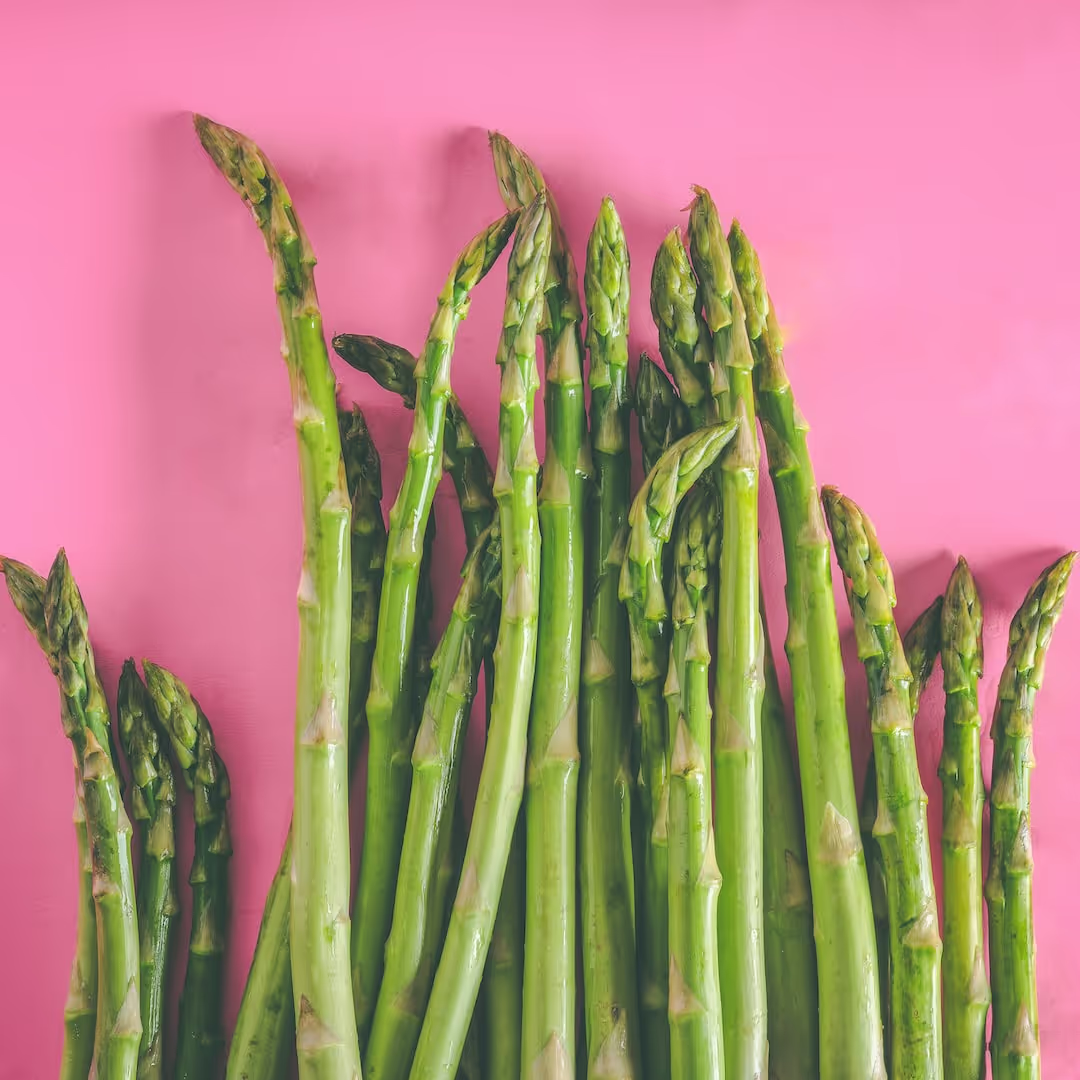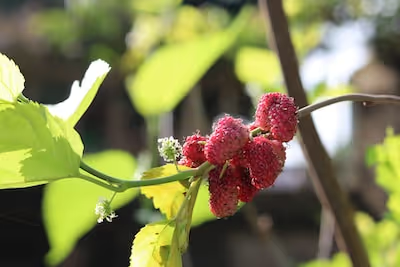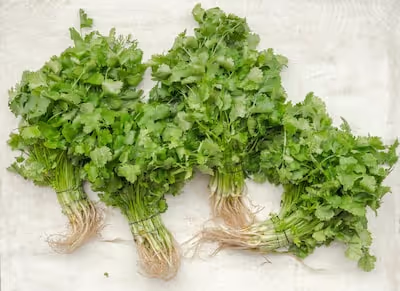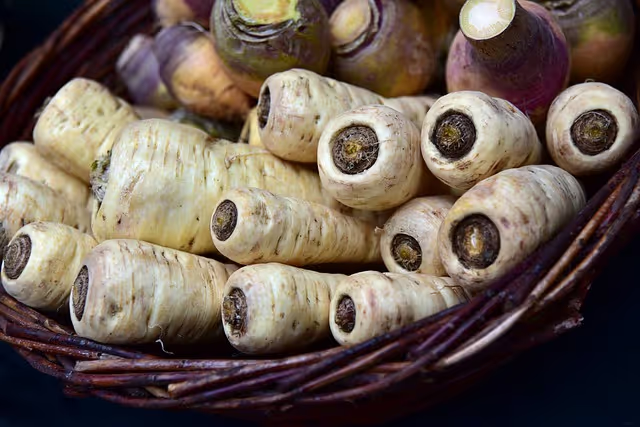Growing Asparagus: How to Plant, Grow, and Harvest Successfully

Growing Asparagus
Growing asparagus rewards patience and effort with delicious spears year after year. Plant this hardy perennial in early spring, choose a sunny spot with well-drained soil, and prepare beds rich in organic matter. Mastering a few simple techniques ensures your asparagus patch thrives for years—read on to discover how to savor an abundant harvest every season.
Cheatsheet: Master Asparagus Beds Fast
🛠️ Tools and products you’ll need
- Dormant asparagus crowns
- Organic compost, aged manure
- Mulch (straw, bark, or grass clippings)
- Shovel
- Garden fork
- Hoe or trowel
- Soil thermometer
🌱 Where & when to plant
- Full sun, well-drained, sandy loam or loamy soil
- Soil pH: 6.5–7.5
- Plant crowns after last frost (soil 50°F/10°C+)
- Allow 4 ft (1.2 m) between rows; 12–18 in (30–45 cm) between plants
🪴 How to plant (Step-by-step)
- Dig trenches 12 in (30 cm) wide, 8 in (20 cm) deep
- Mix compost/manure into soil base
- Soak crowns 1 hour. Place crowns in trench, roots spread
- Cover with 2 in (5 cm) soil. Water well
- As shoots emerge, gradually backfill trench
💧 Water & feed
- Keep soil moist, not soggy
- Mulch for moisture, temperature, and weed control
- Top-dress with compost/manure each spring
🌿 Maintenance
- Weed beds by hand; avoid disturbing roots
- Cut back ferns after frost; add mulch for winter
✂️ Harvesting
- No harvest first 2 years. Third year: pick for 2–3 weeks
- Harvest spears 6–8 in (15–20 cm) tall, before tips open
- Snap or cut spears at ground level
- Stop cutting mid-June (early summer); let ferns grow
🥗 Nutrition & self-sufficiency
- Rich in folate, vitamin K, antioxidants
- Perennial: productive for 20+ years, high yield per sq ft
⚡ Quick tips
- Resists most pests/diseases; monitor for asparagus beetle
- Open-pollinated/heirloom varieties yield best flavor
- 1 year wait = 20 years of harvests
-
Growing Asparagus: How to Plant, Grow, and Harvest Successfully
Growing Asparagus rewards patience with spring spears that taste like cold morning sunshine. I treat it like a long-term savings account, because a well-sited bed pays out for decades.
Site, soil, and timing
Pick full sun and drainage that would make a grapevine jealous, since waterlogged crowns sulk and rot. In clay, I raise the bed 8 to 12 inches, which is 20 to 30 cm, and shape a gentle crown to shed water.
Target soil pH 6.5 to 7.5 for strong roots. I plant crowns once soil hits 50 to 60 F, which is 10 to 16 C, usually early spring after the ground opens but before weeds sprint.
“With good prep, asparagus can produce for 15 to 20 years,” University of Minnesota Extension reports.
Crowns vs seed
I buy one-year crowns for a head start and uniform stands. Seed grows fine, yet it adds a year and invites variability.
Male hybrids like Millennium and Jersey Knight push heavier yields since they skip berry-making. I still let a few females stand to feed beneficial insects and birds.
Pre-plant prep that pays every spring
- Work in 2 to 4 inches, 5 to 10 cm, of finished compost.
- If a soil test calls for phosphorus, I add it pre-plant since P moves slowly in soil.
- Aim for potassium sufficiency, then keep nitrogen modest to prevent weak, floppy ferns.
I avoid fresh manure because it throws weed seeds and salts into the mix. Compost that smells like earth, not a barn, treats asparagus right.
How I plant for fast establishment
- Trench 6 to 8 inches deep, 15 to 20 cm, and 8 to 12 inches wide, 20 to 30 cm.
- Make a low soil ridge in the trench, then set crowns on top like octopuses with roots draped evenly.
- Space crowns 12 to 18 inches, 30 to 45 cm, with rows 4 to 5 feet, 1.2 to 1.5 m, apart.
- Cover with 2 inches, 5 cm, of soil and water well.
- As shoots rise, backfill slowly until the trench is level.
In my heavy soil I add a thin band of sharp sand beneath the ridge to keep crowns from sitting wet. It has saved me from crown rot in rainy springs.
Water, fertility, and mulch
Keep moisture steady during fern growth and spear flushes. I target 1 to 1.5 inches of water per week, 2.5 to 4 cm, via drip so spears stay clean.
Feed light but regular: about 1 to 1.5 lb actual N per 1000 sq ft, which is 0.5 to 0.7 g per sq ft or 5 to 7 g per sq m, after harvest when ferns start rebuilding roots. Compost mulch at 2 inches, 5 cm, locks in moisture and quiets weeds.
Weed strategy without the headache
Weeds steal spring speed, so I stale-seed the trench area before planting, then use a sharp hoe early and often. After year one I rely on mulch and a quick hand-pull once a week.
Deep cultivation snaps asparagus feeder roots. I stay shallow, surgical, and fast.
Varieties I rate for home gardens
- Millennium: Cold tolerant, strong yields, steady in variable soils.
- Jersey Knight: Vigorous male hybrid, handles many climates.
- Guelph Eclipse: Uniform spears, tidy ferns, good disease tolerance.
- Purple Passion: Sweet, tender, lower yield yet stellar raw in salads.
- Argenteuil: Classic for blanching white spears under soil mounds.
I pick two varieties for staggered spear timing and insurance against a weird season. Diversity in the bed keeps the harvest humming.
White and purple asparagus tricks
For white spears, exclude light by hilling soil 8 inches, 20 cm, or sliding on tall black collars. Harvest by feel before tips peek out.
Purple types cook to green, so I slice them raw with lemon and olive oil. The sweetness beats any store bundle by a mile.
Pests, disease, and a calm IPM plan
Common and spotted asparagus beetles chew tips and lay eggs on spears. I flick early adults into soapy water, clip out fern berries to reduce host load, and encourage parasitic wasps by keeping flowers nearby.
For outbreaks, I use a targeted bioinsecticide at dusk when pollinators rest. Avoid broad-spectrum sprays during fern flushes.
Fusarium and rust follow stress. Good drainage, sane harvest, clean fall cutback, and variety choice keep them at bay.
RHS guidance: aim for pH 6.5 to 7.5 and full sun for best spear thickness.
Harvest without hurting next year
I ignore spears the first year to bank energy. In year two I harvest lightly for 2 weeks, then stop and let ferns feed the roots.
From year three on I harvest 6 to 8 weeks, then rest the bed. I stop when spear diameter drops to pencil size.
Morning picks taste sweeter and snap clean. I cut or snap at soil level when spears stand 6 to 8 inches tall, 15 to 20 cm, with tight tips.
Post-harvest handling that preserves sweetness
Asparagus converts sugars to starch fast. I chill within 30 minutes, wrap the cut ends in a damp towel, and stand bundles in the fridge at 36 to 38 F, 2 to 3 C.
For freezing, I blanch 2 minutes, chill, drain, then pack. Texture holds and spring flavor survives winter.
Yield math, space, and cost
A mature plant gives roughly 0.5 to 1 lb per season, 0.2 to 0.45 kg. Twenty crowns can deliver 10 to 20 lb, 4.5 to 9 kg, each spring under good care.
Crowns usually cost 1 to 3 USD each, 1 to 3 EUR. Seed is cheaper yet delays the payoff by a year.
Commercial-style tips that translate at home
- Plant straight rows to speed quick hoeing passes.
- Use drip lines and a simple timer to hit consistent moisture without splashing soil.
- Keep a harvest log. I stop harvest the week yield or spear thickness trends down.
I learned this the hard way by pushing a late June harvest in a dry year. The next spring answered back with skinny spears.
My soil recipe for a forgiving bed
- 50 percent native soil for mineral body.
- 30 percent screened compost for biology and structure.
- 20 percent coarse sand or fine grit in clay sites for air space.
- A dusting of rock minerals only if a soil test calls for them.
Healthy ferns look like fine green fireworks. If the canopy pales midseason, I side-dress with compost and water deeply for two weeks.
Calendar by years
- Year 1: Plant, weed, water, no harvest, mulch after fern up.
- Year 2: Harvest 2 weeks, then let ferns grow tall until frost.
- Year 3 plus: Harvest 6 to 8 weeks each spring, feed after harvest, cut brown ferns late fall or very early spring.
In cold zones I wait for a hard frost to dry ferns, then cut them at ground level and clean all debris. In warm zones I cut in late winter to reset the bed and time the flush.
Companions and neighbors
Tomatoes nearby can distract beetles during fern season, and asparagus beds offer summer dapple for shallow greens at the margins. I avoid planting right next to thirsty trees that raid moisture all summer.
Marigolds and alyssum lure beneficials and keep the aisle lively. Diversity in and around the row steadies the micro-ecosystem.
Buyer’s guide: crowns, seed, tools
- Crowns: look for plump buds, firm, not moldy, with roots that smell earthy.
- Seed: choose named hybrids with regional trial data and disease tolerance notes.
- Tools I reach for: long-handled fork for loosening, collinear hoe for shallow weeding, sharp harvest knife, drip kit with pressure regulator, and a simple pH meter.
Reputable suppliers list crown age, variety, and ship at the right time for your zone. I order early because the good stuff sells out fast.
Common mistakes I see and how I fix them
- Planting too shallow leads to spear sunburn. I set crowns at 6 to 8 inches, 15 to 20 cm.
- Overharvest in year two stunts the bed. I keep it light and move on.
- Poor drainage causes Fusarium trouble. I raise beds and widen aisles to shed water.
- Weeding deep shreds feeder roots. I stay shallow and mulch thick.
A little restraint in spring preserves fat spears for a decade. Patience tastes like buttered toast after a cold harvest.
USDA data: one cup of raw asparagus has about 27 kcal, is rich in folate, and carries fiber and potassium.
Advanced tweaks that actually help
- Inoculate transplants with mycorrhizae in poor soils to aid early root exploration.
- Side-dress with nitrogen right after harvest ends to rebuild carbohydrate reserves.
- Cut ferns only when fully brown to return nutrients to crowns before winter.
Small shifts add up in a perennial bed. I treat asparagus with the same respect I give fruit trees.
FAQ hits from real beds
How many plants per person: I plant 5 to 10 crowns per heavy asparagus eater. That covers fresh spears and a bit for the freezer.
Raised beds: yes, 10 to 12 inches deep, 25 to 30 cm, work well with compost-rich fill. I still give each plant 12 to 18 inches, 30 to 45 cm.
Cut or snap: both work. I snap for speed in soft soil, cut with a knife if spears hide under mulch.
I learned to pick at dawn, rinse the mud from my boots, and eat the first spear right in the row. That taste keeps me honest about prep, spacing, and patience every single year.
Frequently Asked Questions About Growing Asparagus
When is the ideal time to plant asparagus?
Plant asparagus crowns in early spring, once temperatures rise above 50°F (10°C) and the soil becomes workable. Early planting allows the crowns to establish strong roots before summer.
How deep should asparagus crowns be planted?
Dig trenches 6-8 inches (15-20 cm) deep and arrange crowns with roots spread outward. Gradually fill the trench with soil as the plants grow, promoting vigorous development.
What soil conditions promote healthy asparagus growth?
Asparagus plants thrive in well-draining, loamy soils with a slightly acidic to neutral pH ranging from 6.5 to 7.0. Improve soil fertility before planting by incorporating organic compost or aged manure.
How much sunlight does asparagus require?
Asparagus prefers full sun exposure, receiving at least 6-8 hours of direct sunlight daily. Adequate sunlight ensures vigorous spear growth and healthy plant development.
How long do new asparagus plants take before harvesting?
Allow asparagus plants to establish for at least two growing seasons before harvesting spears. In the third year, harvest lightly over a period of two to three weeks; older beds tolerate longer harvest periods, typically up to six weeks.
When do asparagus spears become ready for harvesting?
Harvest asparagus spears once they reach approximately 6-8 inches (15-20 cm) in height and remain firm. Cut spears at or slightly below soil level with a sharp knife to avoid damaging the crown.
What maintenance does asparagus require after planting?
Keep asparagus beds weed-free, and mulch annually using straw or compost to reduce weeds and maintain soil moisture. Water regularly, providing approximately 1 inch (2.5 cm) per week during periods of limited rainfall. Cut back asparagus foliage to ground level in late autumn or early winter after it yellows and dies back.
How long can an asparagus bed remain productive?
Well-maintained asparagus beds often remain productive for 15-20 years or longer. Regular fertilizing, consistent watering, and proper harvesting practices greatly prolong the life and productivity of asparagus plants.
Growing Asparagus is an act of patience and respect for the land. You dig deep, plant crowns with care, and wait—sometimes two or three seasons—before tasting that first sweet spear. But the payoff is real: a bed can feed you for decades if you keep weeds down, mulch thick, and resist the urge to harvest too soon. Water well, feed your soil, and let the ferns stand tall after harvest. Asparagus rewards those who play the long game. For more on perennial crops and building a resilient garden, check out lovage or sorrel. Your patch will thank you, year after year.
The Homesteader's Guide to Sustainable Asparagus Cultivation
Maximizing Nutritional Independence
- Nutrient-Rich Crop: Asparagus provides Vitamin K, folate, fiber, and antioxidants for dietary self-sufficiency.
- Medicinal Utility: Spears and roots historically used for diuretic and anti-inflammatory purposes.
- Livestock Integration: Chickens effectively manage asparagus beetles without chemical controls.
Preserving Asparagus for Year-Round Consumption
- Pickling Spears: Preserve excess harvest by pickling spears in vinegar brine; shelf life up to 18 months.
- Freezing Harvest: Blanch fresh spears for 2–3 mins, shock in ice water, drain, freeze flat; keeps nutritional integrity for 12 months.
- Drying for Convenience: Thinly slice, blanch briefly, dry at 130°F (54°C) until brittle; lasts over a year, ideal for soups and stews.
Homestead Soil Fertility Strategies
- Cover Crops: Plant nitrogen-fixing legumes like peas or clover between asparagus rows; mow down periodically to enrich soil.
- Homemade Compost: Annual mulch of composted kitchen scraps and animal manure boosts soil fertility and spear production.
- Wood Ash Application: Apply hardwood ash lightly each year to supply potassium and raise soil pH slightly (optimal pH 6.5–7.0).
Maximizing Spear Yield on Limited Space
- Vertical Interplanting: Pair asparagus beds with low-growing crops (strawberries, spinach) to optimize space usage.
- Bed Longevity: Rotate planting beds every 15–20 years; asparagus beds yield consistently for decades, securing long-term food production.
Find out which plants will thrive in your garden!
Answer a few fun questions and get custom plant recommendations perfect for your space. Let’s grow something amazing together!

start your season
.avif)




